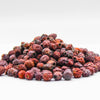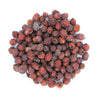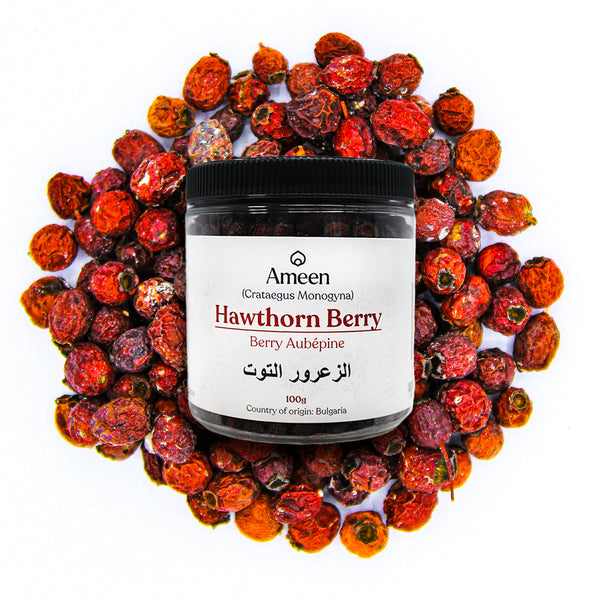Hawthorn Berries, derived from the flowering shrub Crataegus monogyna, are small, red to deep crimson fruits known for their tart flavor and deep-rooted presence in traditional herbal practices. Native to Europe, North Africa, and parts of Asia, these berries are admired for their vibrant color, distinctive taste, and long-standing cultural relevance.
Culinary and Herbal Appeal of Hawthorn Berries
Hawthorn Berries offer a mildly tart, slightly sweet flavor that makes them a popular addition to a wide range of preparations. Traditionally simmered, steeped, or preserved, they are known for their versatility and classic use in natural wellness routines.
Popular Uses Include:
-
Herbal Teas and Decoctions: A beloved base for warm infusions with a fruity, astringent undertone.
-
Jams and Syrups: Their natural pectin content makes them perfect for spreads and preserves.
-
Tinctures and Tonics: Steeped or soaked in liquid blends for traditional herbal use.
Why Choose Hawthorn Berries?
-
Flavor Profile: Mildly tart and sweet with notes of apple and berry.
-
Versatile Use: Ideal for teas, culinary jams, syrups, and heritage herbal blends.
-
Culturally Treasured: Used for centuries in folk traditions across Europe and Asia.
Botanical and Cultural Identity
-
Botanical Name: Crataegus monogyna
-
Common Names:
-
English: Hawthorn Berries, May Berries, Thornapple
-
French: Aubépine
-
German: Weißdornbeeren
-
Arabic: الزعرور البري
-
Chinese: 山楂 (Shānzhā)
-
Other Names: Quickthorn, Hagedorn, Azarole, Crataegus, Whitehorn, Bread-and-Cheese Tree
-
Rediscover the Tradition of Hawthorn
Whether steeped into a comforting tea or added to a rustic preserve, Hawthorn Berries bring a timeless touch of heritage into your kitchen and herbal pantry. Their vibrant color, distinctive flavor, and historical charm make them a staple botanical worth celebrating.





